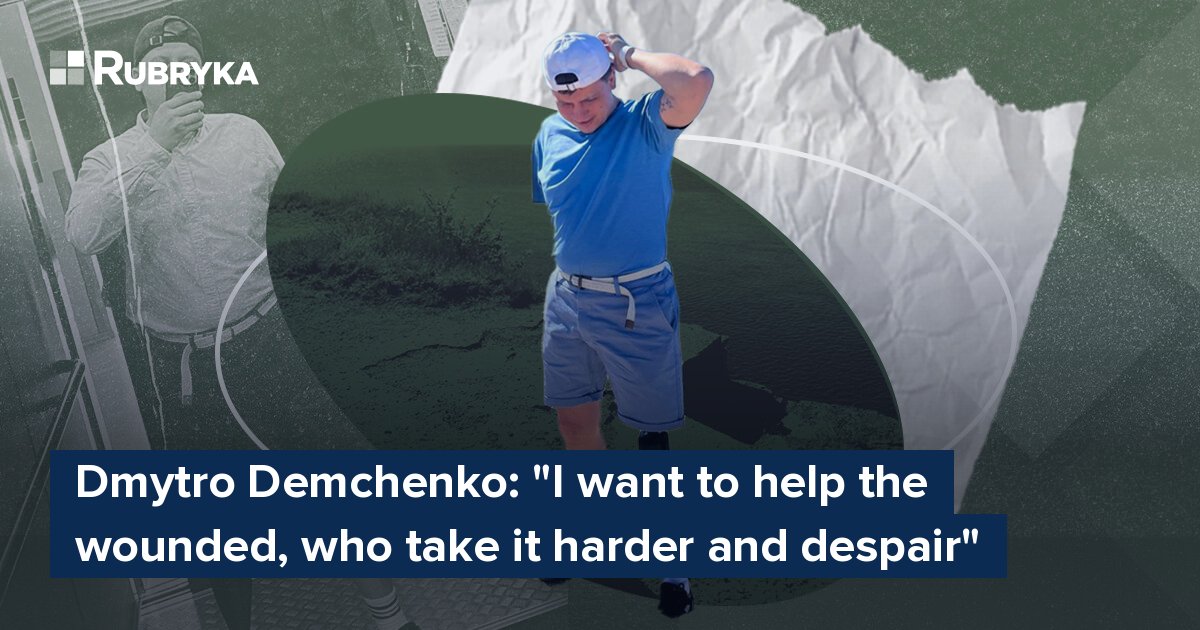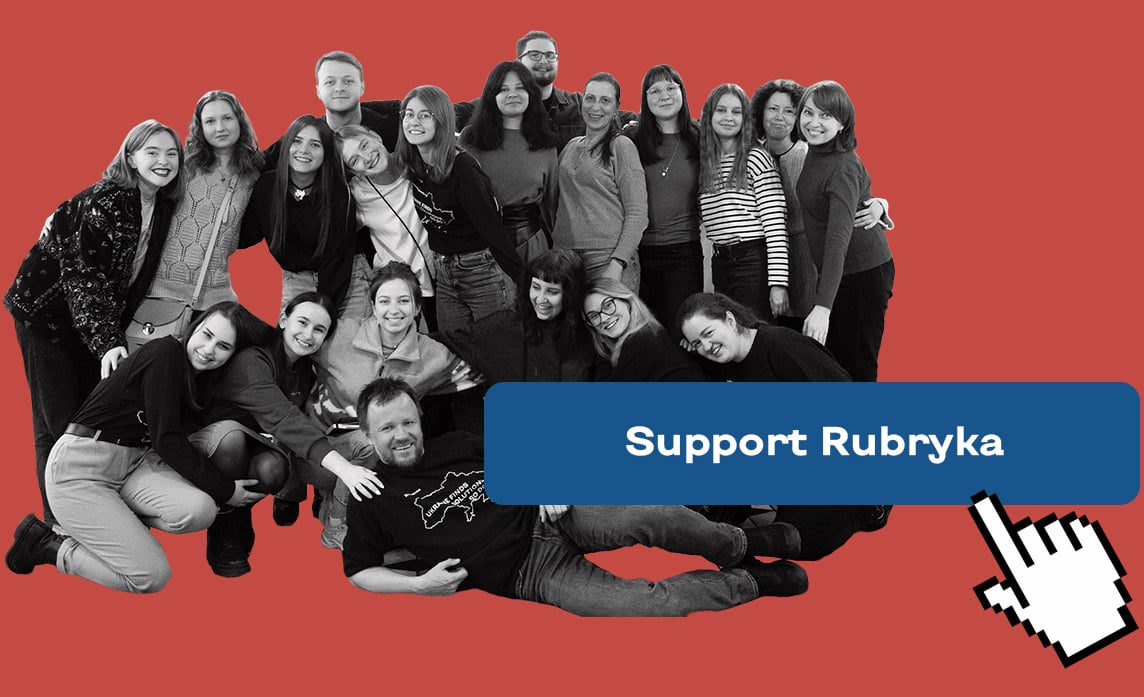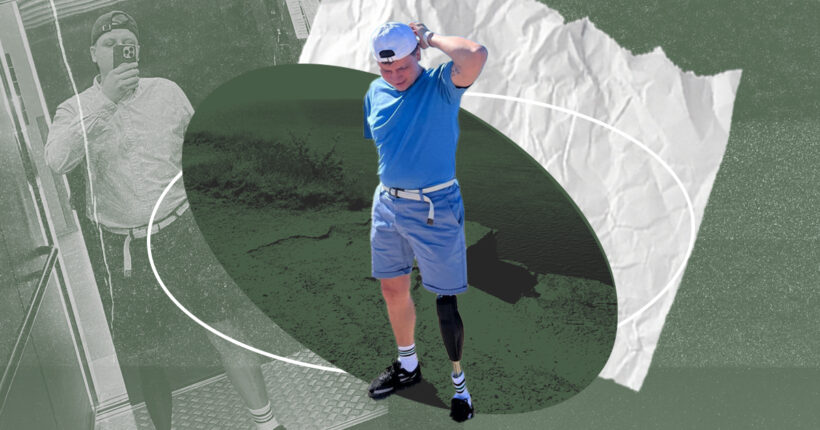
"The year of the full-scale war, I stood at checkpoints and dug trenches, and the next year I already served in a combat brigade"
Demchenko first joined the military in 2016 — initially as a conscript, and later he signed a six-month contract. He served in a guard battalion, responsible for artillery depots. He remembers that period as "guard duty, guard duty, and more guard duty."
When the contract ended, Demchenko returned home and continued his service at the local military commissariat. Later, he was sent to the 53rd Brigade, where he completed training and was deployed to combat positions near Horlivka, the Donetsk region.
He recalls being at the frontline, though there were no active hostilities at the time. It was just "light firefights in the evening" to remind each side that the enemy was still there. Six months later, Demchenko returned to the Druzhkivka Military Commissariat and served there until the beginning of the full-scale invasion.
"The year of the full-scale war, I stood at checkpoints and dug trenches, and the next year I already served in a combat brigade," Demchenko recalls.
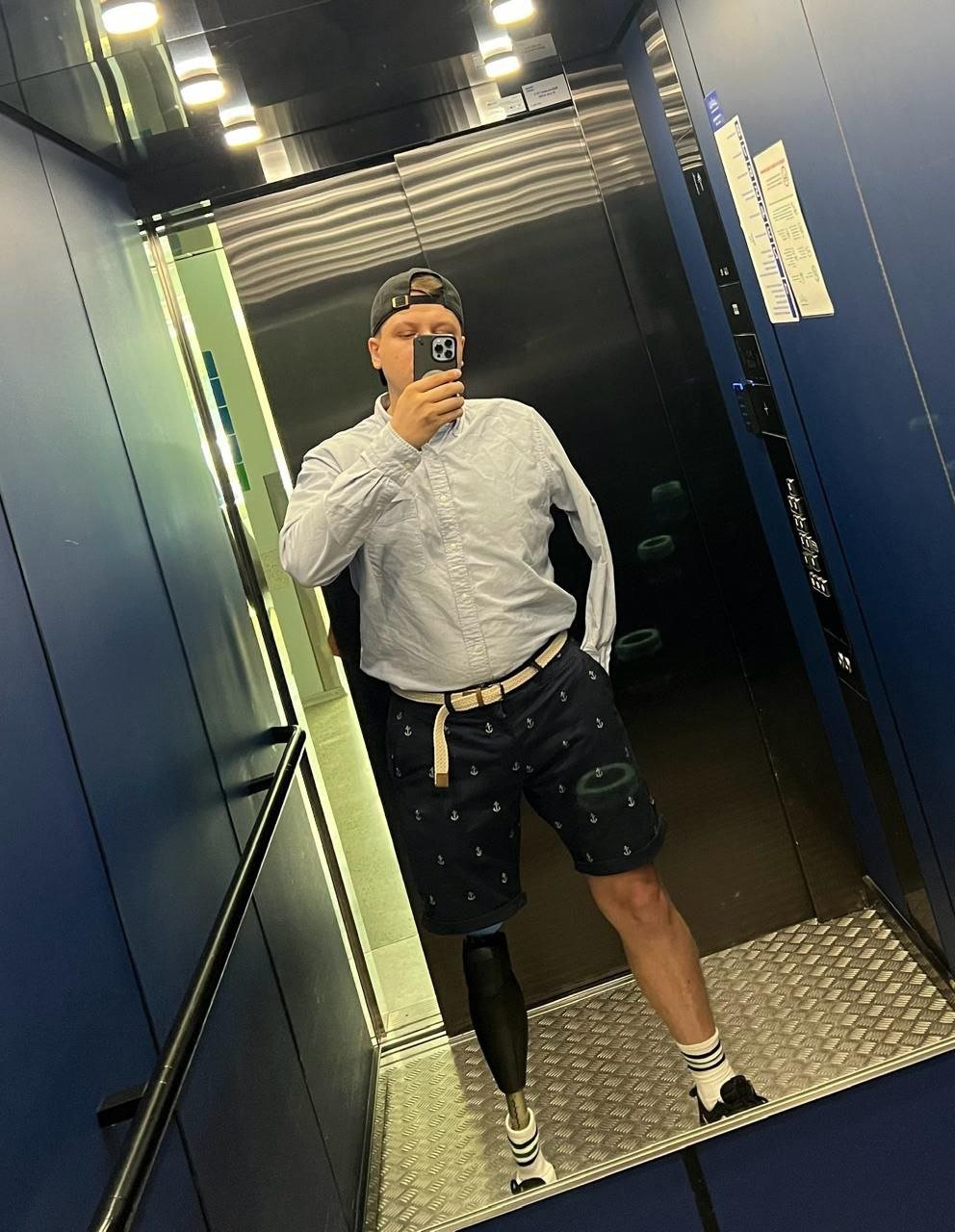
Dmytro Demchenko. Photo from the hero's archive
In 2023, Demchenko was deployed to Zaporizhzhia, where his task was for the "Grads" to provide cover for the infantry. His unit targeted accumulations of enemy equipment and personnel. In just one month, they fired over 3,000 shells with four machines — "it was a lot for us."
Later, Demchenko's brigade was moved to Orikhove, and by November, they were defending Avdiivka. There, they primarily aimed at enemy infantry, which "came from everywhere." However, fighting in Avdiivka proved to be much tougher than in the Zaporizhzhia region.
"Here, we fired just over 300 shells a month with four machines. There were 'bare' fields in the Donetsk region, which made it harder for everyone. The thicker the vegetation, the better you can conceal yourself, but here, everyone is visible," the soldier explains.
"Seventeenth in line"
In Avdiivka, just 70 kilometers from Demchenko's hometown, he was wounded during a counter-battery fight on January 24, 2024. After finishing their mission, the enemy spotted Demchenko and his comrades, retaliating within 20 minutes. A projectile landed just a few meters away from him.
The wounded soldier was evacuated to a stabilization point in Pokrovsk, though he has no memory of this. When he reached Dnipro, doctors realized they could not save his arm and leg, leading to their amputation. He was then transferred to Kyiv, where his condition worsened, and he spent several weeks in intensive care.
"In Kyiv, I had several surgeries — one surgery on my arm and another on my leg. They had to shorten my leg by 7 centimeters to eventually fit a prosthesis," Demchenko shares.
Demchenko spent a month and a half in Kyiv before moving to Lviv for rehabilitation. While in the rehabilitation center's canteen, he met another veteran with a Dutch prosthesis. Curious, Demchenko approached him and asked how he got it. The veteran recommended contacting the BGV Charity Fund.
"I called BGV, and they put me on the waiting list for prosthetics. They told me I was 17th in line, and I'd have to wait until October or November. It was April at the time. But then someone dropped out, and I was offered the chance to go to Estonia as early as June 8. I agreed," the veteran recalls.
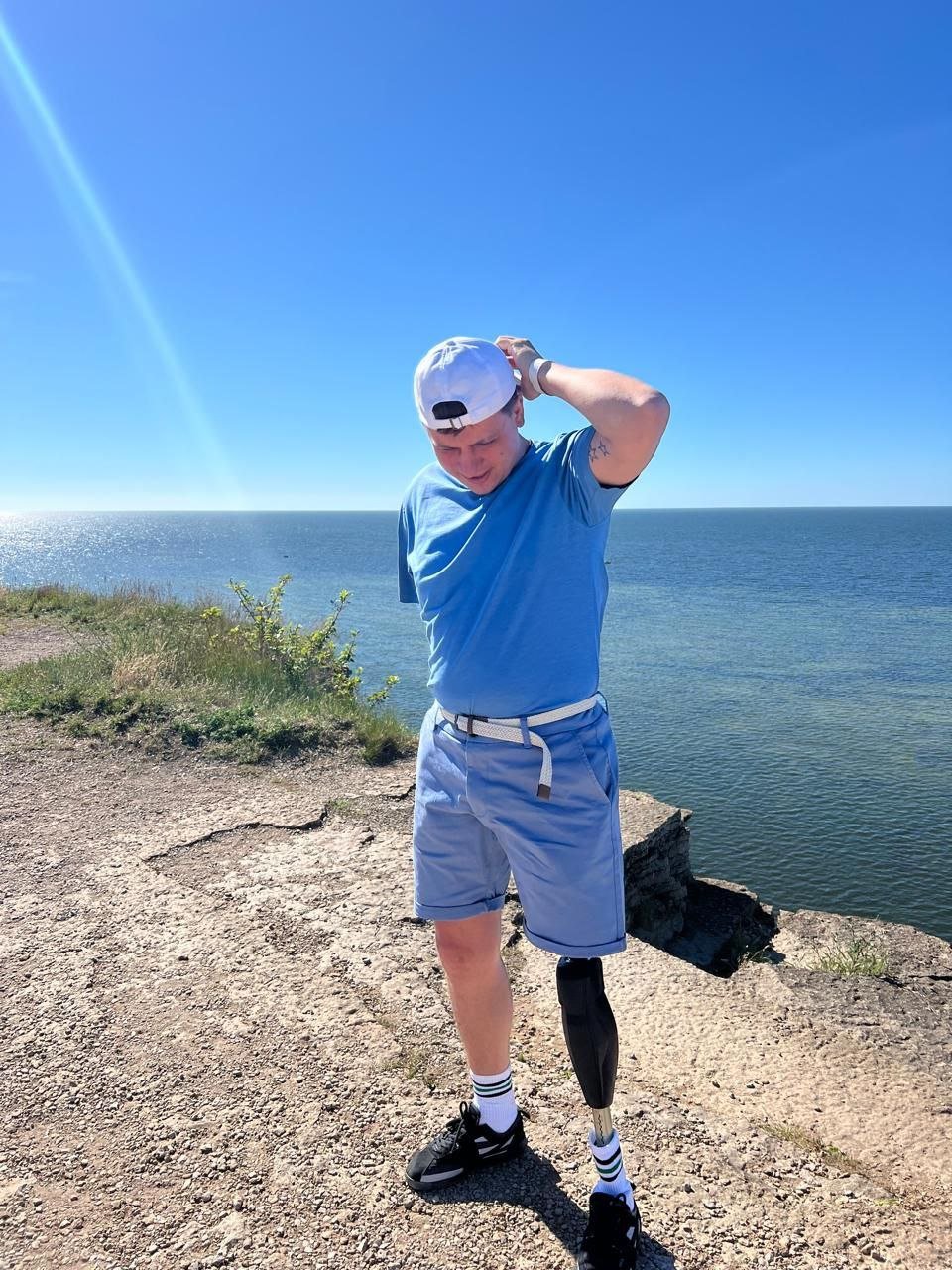
Dmytro Demchenko. Photo from the hero's archive
"I plan to find a job"
On June 8, a driver picked him up, and after a five-hour wait at the Ukrainian-Polish border, followed by another 25 hours of travel, Demchenko arrived in Estonia.
At the hospital entrance, two nurses greeted him and the other veterans who were there for prosthetics. They were provided with accommodation and meals while waiting for their prosthetics. During this time, Demchenko underwent preparatory procedures, including exercises in the pool.
On the fifth day, a prosthetist measured the veteran's stump, and four days later, he received his prosthesis with a training stump receiver. He then worked with a rehabilitation specialist to learn how to walk and adjust to the electronic prosthesis.
Demchenko was fitted with a Genium X3 prosthesis, which offers maximum mobility—it allows running, swimming, and walking on uneven terrain. These prostheses are known for their safety, helping to prevent falls and ensuring smooth walking. Once Demchenko received his permanent stump holder, he was ready to return home.
"The conditions in Estonia were very good. I was always under the supervision of doctors and had a very active schedule filled with various procedures," the veteran says.
Now, Demchenko has returned to Lviv, where he continues his rehabilitation at a local center. Every day he attends sessions with a rehabilitation specialist. He also plans to schedule another round of massages to help improve the flexibility of his scars.
The veteran is still waiting for a prosthetic hand and will need to learn how to use it once it's fitted. In the meantime, he has signed up for psychological courses to prepare for working with other veterans, hoping to assist those who have gone through similar challenges.
"I plan to find a job so that I'm not just sitting at home alone. If I'm lucky, I'd like to work at a veterans' fund. I wouldn't even mind becoming a military psychologist. I want to help those who are wounded, who are struggling more than me, and who are in despair," he says.
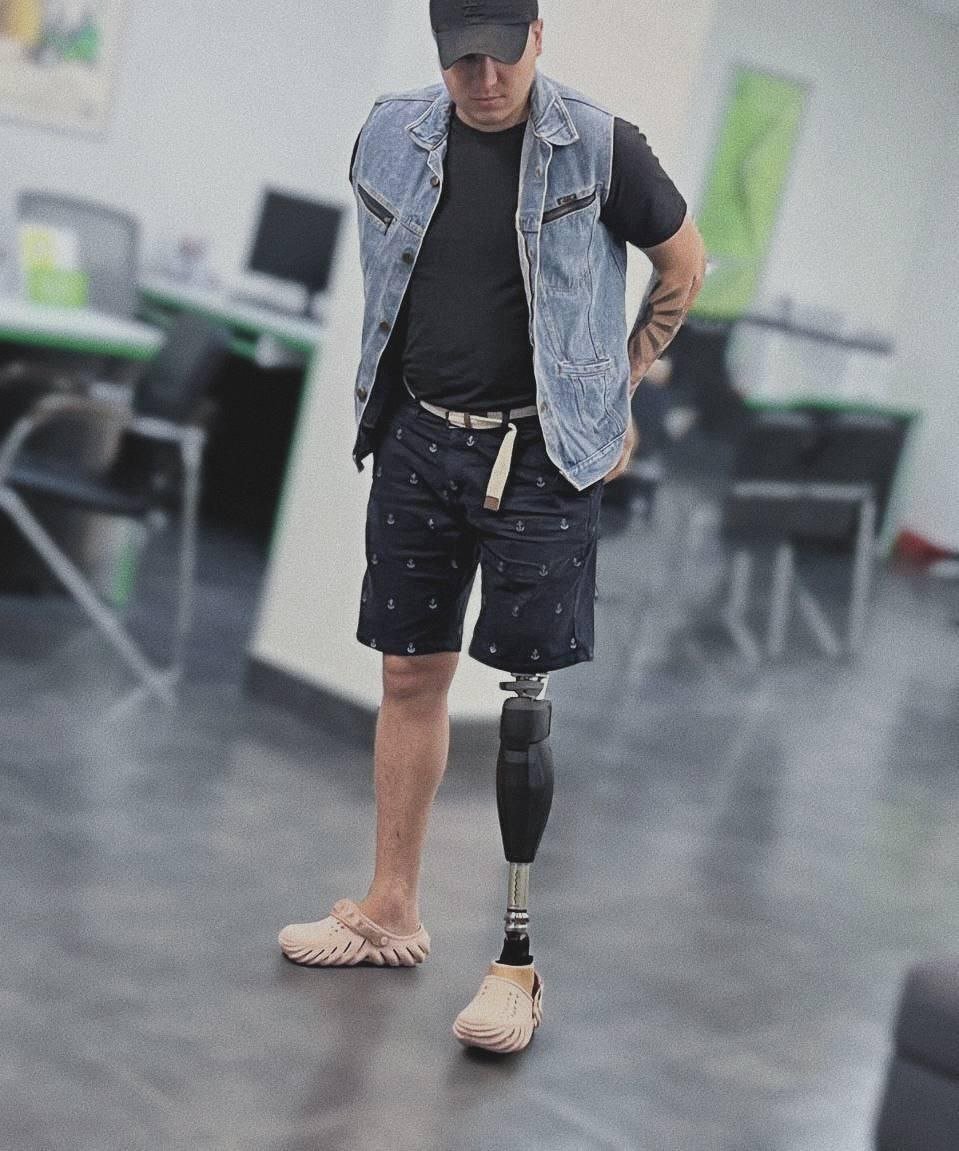
Dmytro Demchenko. Photo from the hero's archive



